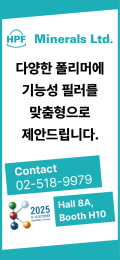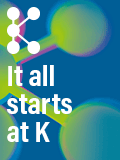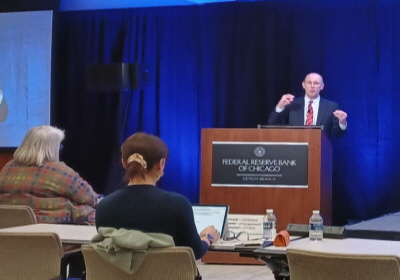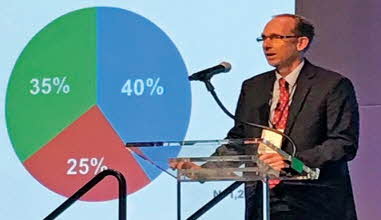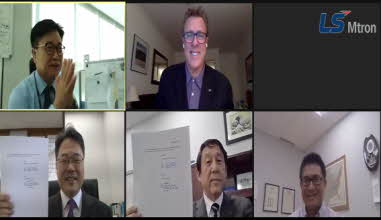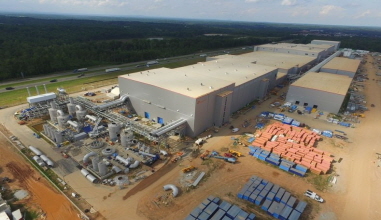Business & people
KraussMaffei at JEC World Paris: Strong impulses for composite processing suitable for series produc
작성자 : Aeyoung Park
2018-02-01 |
조회 : 4117
KraussMaffei at JEC World Paris
: Strong impulses for composite processing suitable for series production





– A new, fully automated wet molding system shortens cycle times and increases
cost-efficiency
– High demand for iPul pultrusion systems
– A new spray mixing head ensures faster nozzle replacement
– FiberForm successfully established for large-scale production
Processes ready for large-scale production and groundbreaking lightweight construction: At JEC World (from March 6-8 in Paris), KraussMaffei is presenting cost-efficient solutions for manufacturing fiber-reinforced plastic components. The focus is on new processes and applications that are based on both thermoset and thermoplastic matrix materials.
For the first time, wet molding is fully automated
"The market trend for fiber-reinforced plastics is still on a positive trajectory. There is currently strong interest in China. Our five different RTM (resin transfer molding) processes are the main source of demand in this region," explains Philipp Zimmermann, Head of the Composites/Surfaces BU. Right now, there is significant interest in wet molding, which is a highly attractive, cost-efficient alternative to manufacturing lightweight components. At JEC, KraussMaffei is debuting a fully automated turnkey solution. "It cuts cycle times in half compared to manual solutions and simultaneously increases process reliability," explains Zimmermann. The distinguishing feature of the KraussMaffei wet molding process is a simple process chain. Low mold cavity pressures when wetting fibers ensure an affordable investment and upkeep of the systems as well as elimination of the entire preforming process. Wet molding is one of just a few processes that permits the use of recycled materials.
The iPul pultrusion system meets the needs of the modern age
Another highlight at the KraussMaffei booth is the iPul pultrusion system presentation. This is the first complete system for continuous pultrusion and has production speeds that are more than twice as fast as conventional tub processes. "The new iPul system meets the needs of the modern age. Interest remains high, particularly for applications in the construction industry such as window profiles or rebars for concrete or in wind turbines. We are also increasingly getting requests from the automotive industry," says Zimmermann. KraussMaffei recently expanded its Lightweight Construction TechCenter in Munich by installing a second iPul system for manufacturing pultruded rebars for concrete elements. Together with the iPul system for flat sections, KraussMaffei now offers its customers a unique research environment to develop and test new processes and applications in pultrusion.
First-class surfaces for large components
LFI (long fiber injection) can be used to manufacture large components with excellent surfaces for trucks and agricultural machinery. "The long-fiber injection process permits the use of high fiber volumes of up to 50 percent. This process produces lightweight components with high stability. The high degree of automation ensures short cycle times," says Zimmermann. The low viscosity of the components makes it possible to manufacture large, complex, thin-walled parts. These applications feature high temperature stability and an excellent impact strength and already have paintable surfaces. At JEC, KraussMaffei is presenting a side cover for customers' commercial vehicles.
A new spray mixing head ensures faster nozzle replacement
The newly developed KraussMaffei nozzle-changing component for the SCS mixing head boasts a critical advantage. Flat-fan and air-assisted circular jet nozzles that are required for spraying various sections of the component can be installed on a single mixing head and used in alternation. "This doesn't just shorten cycle times. It also reduces investment costs because only one mixing head is required and the hydraulic switchover unit that had been used previously is no longer needed," explains Zimmermann.
In the structural component spraying (SCS) process, layers made up of fiber mats and honeycomb cores are sprayed with unreinforced PU, inserted into a mold and compression molded. SCS permits outer layers with low thickness, so that the manufactured components are particularly lightweight. Flat-fan nozzles and air-assisted circular jet nozzles are available for the spraying process. Flat-fan nozzles produce a fan-like flat jet and are suited for large-format coating of the polyurethane mixture on relatively level, large-sized components. The air-assisted circular jet nozzles produce a finer spray and have a lower output capacity than the flat-fan nozzles. They are used primarily for component areas with challenging geometry.
Breakthrough for FiberForm in large-scale production
"The FiberForm process developed by KraussMaffei has been successfully established in large-scale production. Our customers appreciate the high quality, reliability and cost-efficiency in the production of thermoplastic composites," says Stefan Fenske, FiberForm & IMC Technology Manager at KraussMaffei. FiberForm is the thermoforming and over-molding of organic sheets, platen-shaped semifinished products with continuous fibers made of glass, carbon or aramide that, for example, are embedded into a thermoplastic matrix made out of polyamide (PA) or polypropylene (PP). In this process, these semifinished products are initially heated and reshaped in the injection mold and then back-injected with a fiber-reinforced polymer. The fully automated process enables short cycle times of less than 60 seconds and, therefore, production processes that are ready for large series. The entire production process, including infrared heating technology control for the composite sheet has been integrated in the MC6 machine control system. This simplifies operation.
"The lightweight, thermoplastic construction is an important business unit that is undergoing continuous development. Therefore, we are expanding and optimizing our automation solutions continuously so that we can offer our customers the best possible services. Standardization allowed us to compile the findings on the infrared heating station from previous years," explains Dr. Mesut Cetin, Product and Project Manager for Lightweight Construction at KraussMaffei Automation. For example, the use of new matrix materials and natural fibers in composite sheets is currently being tested. This offers significant potential for applications in the automotive industry (e.g. for door module carriers) and for other industries such as the sporting goods and packaging industries.
KraussMaffei at JEC World Paris
Pavilion 6, Booth F61


